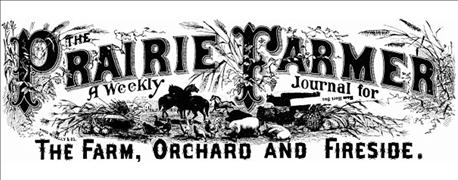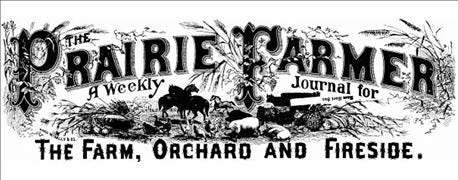
In 1841, pioneers made their way across the prairie. They settled new ground. They carved out a living. They turned the soil and began searching out the crops that would ultimately make Illinois farmland some of the most prolific in the entire world.

175 YEARS: Celebrating Prairie Farmer, 1841-2016
John S. Wright saw a way he could help. A child prodigy who mastered arithmetic, grammar and geology by age 7, and Greek and Latin by age 10, he opened The Prairie Store with his father at age 17 in the muddy river town of Chicago — then population 3,500, and but a stop on the way to the mining boomtown of Galena. By age 19, Wright had published a lithograph map of Chicago and recorded its inhabitants in a census. By age 23, he was lobbying the halls of the Illinois State Capitol, calling for recognition of Illinois’ great agricultural potential and the need to work together to achieve it.
And by age 26, Wright was editor and publisher of The Union Agriculturist and Western Prairie Farmer, which would soon be shortened to Prairie Farmer.
In those days, as the country resounded in partisan political debates between Martin Van Buren and William Henry Harrison, Wright argued that the settlers needed an agricultural paper that would be “as non-partisan and unpolitical as the established newspapers were fiercely and personally political.”
Then, just as today, no?
As 175 years have ticked by since the original publication of Prairie Farmer, much has changed. Horses to horsepower, fences to fencerows, villages to major cities.
But a lot hasn’t.
Prairie Farmer is America’s oldest farm publication — perhaps its oldest publication , period — and as we celebrate 175 years of publishing with a special series of stories this fall, we’re going to take a look at those very things that haven’t changed. We’ll look at topics like the pattern drainage tile maps we found in a story … from 1884. And our desire to refine and fine-tune our ability to grow corn, which has been a continuous theme throughout 175 years.
We’ll look at Master Farmers and Protective Unions, and at Farm Progress Shows, for sure. We’ll take a look at how Cap’n Stubby got his start, along with famed columnists John Turnipseed, Delight Wier and more. And we’ll hear from past editors about the issues that shaped their tenure at the helm of this magazine.
Celebrating a 175th birthday is an apt moment to reflect on where we’ve been, but it’s also a chance to renew our dedication to helping improve your farm business and quality of living. The Prairie Farmer creed, while no longer published on our monthly pages, is still our guiding editorial light:
To serve God and country
To conserve our priceless soil
To protect the family farm
To support the agricultural community
We hope you’ll follow along with us as we look back through the pages of Prairie Farmer and celebrate all that Illinois agriculture has accomplished.
It’s been a good 175 years.
About the Author(s)
You May Also Like






